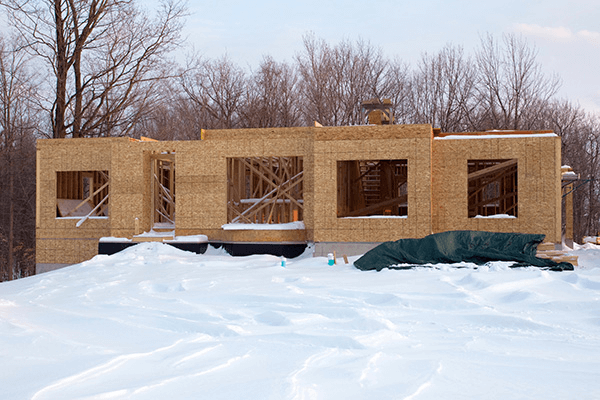Since construction employees work almost exclusively outdoors, the weather plays a large role in their daily working conditions. Sometimes, working in rainy, cold or snowy conditions is simply unavoidable, so it is important that your employees are prepared and educated on handling the conditions safely. Inclement weather can also impact other responsibilities as an employer, so you need to be prepared as well.
Cold Weather Risks. Working in the extreme cold can be dangerous for employees, and precipitation and wind increase that danger. OSHA has issued guidelines offering precautionary measures to prevent cold stress, which can lead to tissue damage, hypothermia, frostbite and trench foot. Factors that contribute to cold stress are cold air temperatures, high velocity air movement, dampness of the air and contact with cold water or surfaces. Therefore, it is important to remember that even temperatures of 50 degrees, with enough rain and wind, can cause cold stress.
Safety in the Cold. There are several precautions that employees should take while working in cold or dangerous weather:
- Take breaks to get warm.
- Drink plenty of liquids, but avoid caffeine and alcohol.
- Avoid smoking, which constricts blood flow to skin.
- Be aware of any cold weather related side-effects that their medication may have.
- Know and understand symptoms of cold-related illnesses and injuries.
- Stretch before physical work to prevent muscle pulls and injuries.
- Wear protective clothing when it does not interfere with personal protective gear and equipment:
- At least three layers: something close to the skin to wick moisture away, an insulation layer and an outer wind and waterproof layer.
- Outer layers should be loose to allow ventilation and prevent overheating.
- Hat or hood when not wearing a hard hat, or under the hard hat when necessary.
- Insulated boots.
- Gloves—not only can the cold cause injuries to exposed skin, but cold hands also make workers more prone to injury when handling machinery or other objects.
Employee Training. Cold, rainy or snowy weather can cause unusual conditions and higher risks, so it is important to train employees on safety procedures. They should understand the dangers of exposed skin, insufficient protective wear and cold, wet or slippery equipment. Employees also should be trained to recognize and treat cold-weather illnesses and injuries.
Driving Company Vehicles. Another concern regarding inclement weather is employees who drive a company vehicle as part of their workday. Driving in severe weather can be extremely dangerous, so it is important to take precautions. All vehicles should be given a safety check by a mechanic before the bad weather hits, and they should also be equipped with emergency materials such as a snow scraper, blanket, first aid kit and flashlight. In order to protect your company against liability, any employees who may drive in bad weather on company time, regardless of whether they drive a company or personal vehicle, should be trained in safe, cautious driving techniques and what to do in case of an accident. All of these cold and inclement weather provisions should be included in your safety plan and discussed before and during the onset of such weather.
Communication Channels. Whether your employees come in to work on a given day may depend on the weather conditions. In uncertain weather conditions, you may not know until the night before or morning of if your employees will be working that day. As such, it is essential that you have communication channels in place to inform your employees, including a backup method if they cannot be reached on their phone.
Be prepared before bad weather hits. If you are proactive in tackling bad weather conditions, you can help minimize the impact on your business and employees.








